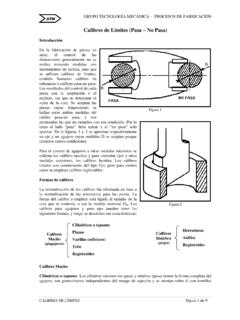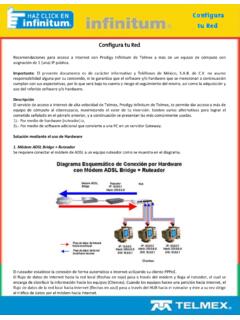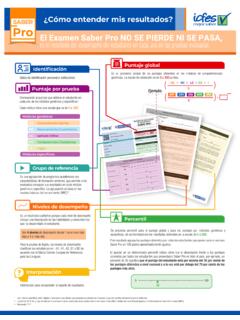Transcription of GMP Equalisation Working Group Supplemental Guidance
1 G M P E q u a l i s a t io n W o r k i n g G ro up S u pp l e m e n t a l G u id a n c e Allowing for Anti-franking when achieving GMP Equality September 2021 Supplemental Guidance on allowing for Anti-Franking when achieving GMP Equality Section Content Page 1 Introduction 1 2 Anti-franking 1 3 Key anti-franking issues for GMP equality 2 Appendix 1 summary of techniques i Appendix 2 Examples iii A c k n o w l e d g m e n t s PASA is grateful to the authors of the Guidance and members of the GMP Equalisation Anti-Franking subgroup and their employers. Kim Gubler (Board Sponsor) PASA Board Director Felicity Boyce (Chair) Aon Alasdair Mayes Lane Clark & Peacock LLP Claire van Rees Sacker & Partners LLP Duncan Buchanan Hogan Lovells LLP Rebecca Morgan ITM Limited Richard Akroyd Willis Towers Watson Steve Nicholson Equiniti ~ 1 ~ 1. Introduction The Methodology Guidance issued in September 2019 included a short section on anti-franking.
2 Following requests from the industry, this supplement to that Guidance examines the interaction of anti-franking and GMP Equalisation in more detail, considering why anti-franking is important and suggesting approaches to deal with key areas of uncertainty. It doesn t provide a full manual for anti-franking calculations; we recommend schemes consult the relevant legislation/their legal advisors for the exact requirements. 2. Anti-franking What is anti-franking? GMP legislation contains complex rules (known as anti-franking) designed to make sure the revaluation provided to GMPs in deferment can t be offset against a member's other benefits (other than in limited circumstances). This is implemented by means of an anti-franking minimum pension defined under legislation and underpins the scheme pension. In broad terms, this can result in pensions in payment being stepped up when a member reaches their GMP Age, or at retirement when a member remains in active pensionable service after their GMP Age.
3 Anti-franking shouldn t be confused with the GMP coverage requirement1 for the total pension accrued prior to 06 April 1997 to be at least equal to the GMP. The coverage requirement applies in a wider variety of situations than anti-franking, but where anti-franking applies it ll exceed the coverage requirement. In practice, schemes and their administrators adopt different methods for testing anti-franking and formal scheme rules rarely go into detail on the subject. When comparing benefits as part of an Equalisation project this will usually be done on the basis of past practice. Why does anti-franking matter for GMP Equalisation ? Anti-franking only applies directly to certain members2. For many schemes anti-franking may have little impact on the overall scheme liability or benefits payable for most members. However, for those members to whom anti-franking does apply, it can have a significant impact which usually only applies to one sex.
4 Anti-franking can therefore significantly impact GMP Equalisation , including changing which sex is better off overall (see the difference between the Guy and Gary examples in Appendix 2 for a demonstration). In some schemes, most of the large uplifts required to achieve GMP Equality will be due to anti-franking. 1 Formerly defined under Regulation 55 of the OPS (Contracting-out) Regulations. This was revoked after 05 April 2016, but should ve been included in individual Scheme Rules, so in practice will remain in effect. 2 Anti-franking applies directly to members who leave before NPA and then retire at NPA, and to members who leave active service at or over NPA, subject to certain additional conditions set out in the Pension Schemes Act 1993 s87. However, the preservation requirements for members taking early or late retirement to receive benefits at least equal in value to those they would ve received had they retired at NPA means it may have an indirect effect on other members as well.
5 Which schemes will be affected by anti-franking? Anti-franking legislation will apply to all schemes which need to achieve GMP Equality, although in most cases the underpin will be unlikely to bite. Members for whom anti-franking is particularly likely to be an issue include: Members with Normal Pension Age (NPA) < 65 where no increases are given on Pre97 excess in payment Members with NPA < 65, where the scheme doesn t give revaluations on GMP on retirement prior to GMP age, or where these revaluations are at a lower rate than statutory GMP revaluation Members who continue in service past age 60 Members with high GMP proportions Note even for schemes where the benefit structure is such that anti-franking uplifts aren t usually required, there may still be individual members (typically those with high proportions of GMP, or for whom the Later Earnings Addition applies) who are due uplifts.
6 All schemes should therefore consider anti-franking as part of achieving GMP Equality. 3. Key anti-franking issues for GMP equality Implementation of whole of service test for Equalisation of post 90 benefits Anti-franking is defined under legislation as a whole of service test, with no consideration it might be applied to only part of a member's benefits. For members who commenced service prior to 17 May 1990, it s therefore legislatively unclear how anti-franking should be applied for Equalisation purposes. Three potential techniques are explained below, but other techniques are also possible and have been used within the industry. A. Ring-fence (90-97) Technique [See examples Guy, Gary and Edward] The Methodology Guidance published in September 2019 set out the following technique, which ring-fences 90-97 benefits: Comply with legislation and apply the anti-franking test to the member's whole (unequalised) benefit at the member's GMP Age or later date of retirement Compare the benefit of the member relating to service in the period 1990 to 19973 (including relevant anti-franking and revaluation for the member's sex to that 1990 to 1997 pension in isolation as if it were the member s only benefit) which would ve been payable to the comparator in respect of the same period (applying anti-franking and revaluation for the opposite sex to that 1990 to 1997 pension in isolation as if it were the comparator s only benefit).
7 Where the comparator would have 3 You should carefully consider the extent to which benefits outside the 90-97 period affect the 90-97 benefits. For example, we would usually expect the NPA used would be consistent with that for the whole Scheme, even though the pension amounts are being calculated based on 90-97 service only. a higher benefit an uplift would need to be provided to the member reflecting the difference between the two We expect this technique to be the starting point used for discussion for many schemes, as it s relatively simple and will often be appropriate; we ve therefore focused our examples later on this. However, it can give odd answers in some circumstances4. Alternative techniques are possible. We set out two below. These also have their own disadvantages (including typically requiring more data and calculations than the ring-fencing technique) and aren t intended to be exhaustive.
8 Appendix 1 sets out a comparison of these techniques to the Ring-Fence Technique. B. DWP 2012 (Whole of Service Mixed Sex) Technique The Department for Work and Pensions published examples (7 and 8) in its January 2012 consultation A possible method for equalising pensions for the effect of the Guaranteed Minimum Pension 5 which included an anti-franking technique. This worked as follows: Comply with legislation and apply the anti-franking test to the member's whole (unequalised) benefit at the member's GMP Age or later date of retirement Compare this total pension to a pension calculated as follows: o The Pre90 element consists of the member's pension o The Post90 element consists of the opposite sex's pension o The anti-franking minimum at each age consists of the sum of the following components: The Pre90 minimum for the true sex. This will always include the member s Pre90 pension at cessation date, and any applicable increase in Pre90 excess pension, but will only include increases on Pre90 GMP if the true sex has reached GMP age The Post90 minimum for the opposite sex.
9 This will always include the comparator s Post90 pension at cessation date, and any applicable increase in Post90 excess pension, but will only include increases on Post90 GMP if the comparator has reached GMP age To adopt this technique a scheme would need to determine how such a mixed sex underpin would be calculated. This isn t covered by legislation and isn t completely described in the DWP examples. The chosen approach would then need to be coded. C. Apportionment (Whole of Service Pure Sex) Technique This technique performs the whole of service test, and then attempts to allocate part of the resulting uplift to the 90-97 period: 4 For example, consider a Scheme where nil pension increases are applied on excess pension accrued after 1 January 1989, but the Scheme has Fixed 3% increases on Pre89 excess. In this scenario, considering only 90-97 benefits may result in an uplift being due where no uplift would have been required on the full pension.
10 5 Note the DWP examples assume the female s GMP comes into payment immediately following the Cessation Date, and is therefore not subject to anti-franking; this Guidance extrapolates the basic technique to a more general case. Comply with legislation and apply the anti-franking test to the member's whole (unequalised) benefit at the member's GMP Age or later date of retirement Apply the anti-franking test to the opposite comparator's whole benefit (including Pre90 pension) at the comparator's GMP age or later date of retirement Pro-rate the anti-franking step-ups in an appropriate manner for the 90-97 period only Compare the benefit for a member relating to 90-97 service only, with the member's step-up calculated in the previous step, with that for the equivalent pension for the comparator. If the comparator would have a higher benefit then an uplift will need to be provided to the member To adopt this technique a scheme would need to determine how such pro-rating would be undertaken.






